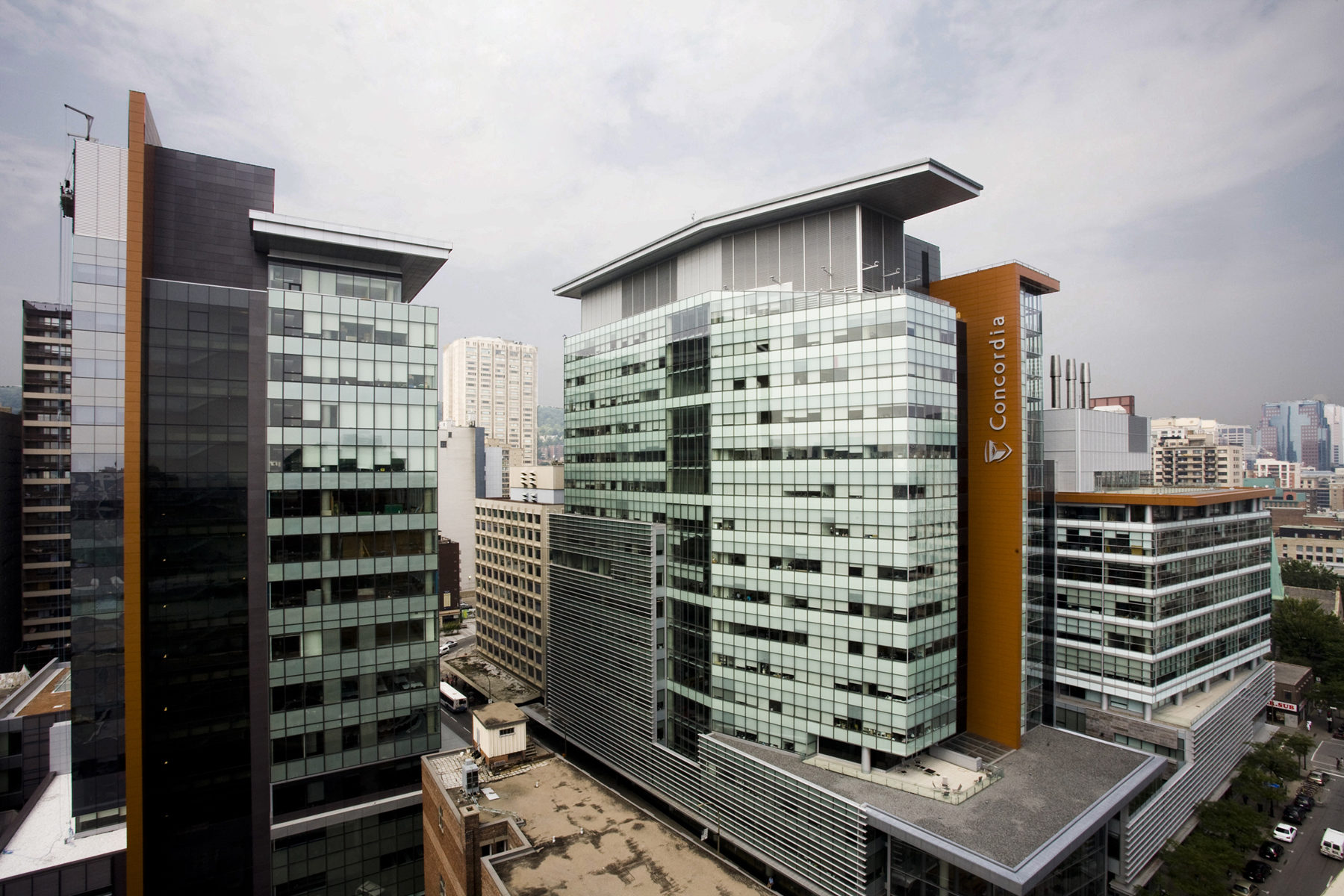Concordia department of journalism chair David Secko discusses new program
Gone are the year-long classes and the opportunity to graduate with a 72-credit specialization from Concordia’s journalism department. Since 2016, all journalism students are enrolled in the department’s new 45-credit major.
A year after the change, department chair David Secko said the objective of the new format was to fully integrate all aspects of journalism––written, audio and video––into the program. As of next year, new students will also wrap up their degree with a digital magazine course where they will bring “all their skills together,” Secko said.
Despite the changes, some former students, like Salim Valji and Noëlle Solange Didierjean, are voicing their discontent with the program. In March, Valji and Didierjean sat down with Secko and the department’s undergraduate program director, Andrea Hunter, to discuss ways to improve the program.
Among their concerns were the department’s cutting of the radio newsroom course—a class where students are asked to produce a 15-minute newscast in two and a half hours—from two classes per week to one.
“The university is in deficit, and there are just not enough course sections to hold that many courses,” Secko told The Concordian when asked about the reduced number of radio newsroom classes. “It was obvious we [were] going to need to change some things because the university wasn’t going to allow us to have that many courses.” The chair said he turned to professor Paul Gott to “make the class as good as before, or as close as before, with less sections.”
Valji and Didierjean were also critical of the method by which the department selected students to be part of a class with Patti Sonntag, a Concordia alumna and the managing editor of The New York Times’s news services division. Sonntag, Concordia’s former journalist-in-residence, taught an independent study course in the Winter 2017 semester.
The students who were part of the class collaborated on an investigative journalism project published in the Canadian magazine The Walrus.
According to Secko, the students were chosen “based on criteria” set by former chair Brian Gabrial and “those sets of students had to go through an application with [Sonntag].”
Valji and Didierjean were also critical of the attendance selection process for a conference given by CBC foreign correspondent Nahlah Ayed in February 2017. In that case, the department invited students “that excelled in certain classes,” according to Secko. The chair said he received negative feedback from students following the closed session, but pointed out that when Ayed was invited in the fall to speak for a conference, and only nine students showed up.
“More [journalism] students should be interested, and they should be more engaged,” Secko said. “We try the best we can to engage students to think how journalism is. In the end, that passion and that fire has to come [from them].”
The department has written to journalism students about their lack of attendance at events in the past. In an email dated Sept. 28, 2015 obtained by The Concordian, Gabrial wrote: “The biggest question I received from our alumni at our 40th anniversary […] was, ‘Where are the students?’”
“I want to remind you that, just as our department will do whatever it can to support you, sometimes you need to support the department,” the email read.
Secko said the department intends to start micro-teaching courses where a journalist will give a two- or three-hour course on a subject they’re specialized in to combine the benefits of lectures and journalism practice.
Listening to students
Feedback and comments on the program currently come in many informal ways such as interactions between students and professors, debriefs with Hunter and course evaluations at the end of the year.
“Should we be doing more ‘active focus group-style’ [conversations] or things like that to [fix] holes? That’s going to take me a little bit of time to think through,” Secko said.
“Now in my own mind,” he added, “whether we’ll do it or not, [we have to] think where it will go, and I don’t want to distract people. I do think there’s space to formalize that even more.”
Despite not having any formal ways for students to suggest changes yet, Secko said students have come forward with ideas for classes.
For one, he said the idea of a “business of journalism” course has been “reflected a lot.”
“I couldn’t pick the brain of an instructor on how to pitch myself or my stories,” Valji told The Concordian. “Most of them had never worked as journalists in the digital media era. They had no experience in writing pitch emails and negotiating with editors.”
“Often, those elements of entrepreneurism are built into many of the classes,” Secko said. “Whether or not they need to all come out and get put into a specific class is something we often look at.”
Secko explained that new classes first have to be designed by a curriculum committee, then sent to the office of the dean of the Faculty of Arts and Science, André Roy.
“If the dean likes it, it would go up,” Secko said. Following the approval of the dean’s office, the course needs to be approved by the Concordia Senate.
“It takes, if you’re lucky, about a year,” according to Secko.
Before the beginning of the semester, the department chairs and instructors also met with representatives from Quebec and Montreal-based media. According to CBC Montreal managing editor Helen Evans, who attended the meeting, the department asked questions such as: “What do you need from our journalism graduates?”
Secko said conversations with media representatives have changed in focus from the need for national and international coverage “towards the need to understand what Montreal needs [and] what Quebec needs.”
The journalism department also plans to introduce a sports journalism class funded by a $650,000 donation made by Sportsnet in December 2015. Secko said the money––which has already been used for various scholarships––will pay for the professor “and any other thing” needed to run the course.
Valji, who has contributed to ESPN, The New York Times and most-recently started working for TSN, said Secko “really has to think about what the department’s identity is.”
“Are we a journalism school or a school that studies journalism?” the Concordia alumnus asked, referring to the department’s need to emphasize practical journalism.
“All of us need to really think very carefully about what is journalism in 2017,” Evans said. “The context has changed drastically and any journalism program at any point needs to be thinking about the exact time it’s offering that program.”
Secko’s vision is one where students are able to think critically and for themselves—a program where students have the “ability to be entrepreneurs […] and find new ways to interact with the constantly evolving media environment.”
“Part of what we need to do in thinking of the perfect program is to always interact with students, alums, with as many people as we can get through,” Secko said.
This story was originally published on The Concordian, and is republished here with the author’s permission.



